MP Board Solutions for Class 10 Geography Chapter 1 – Resources and Development
MP Board Solutions for Class 10 Geography Chapter 1 – Resources and Development are essential for understanding key resource-related concepts in the MPBSE curriculum. These well-structured answers help students grasp topics like classification of resources, land use patterns, soil types, and sustainable development. Designed as per the latest syllabus, these solutions strengthen conceptual clarity and improve exam preparation. Ideal for revision and practice, they promote environmental responsibility and critical thinking, making them a valuable study tool for scoring well in Class 10 Social Science exams.
MP Board Solutions For Class 10 Geography – Resources and Development – Exercise Images
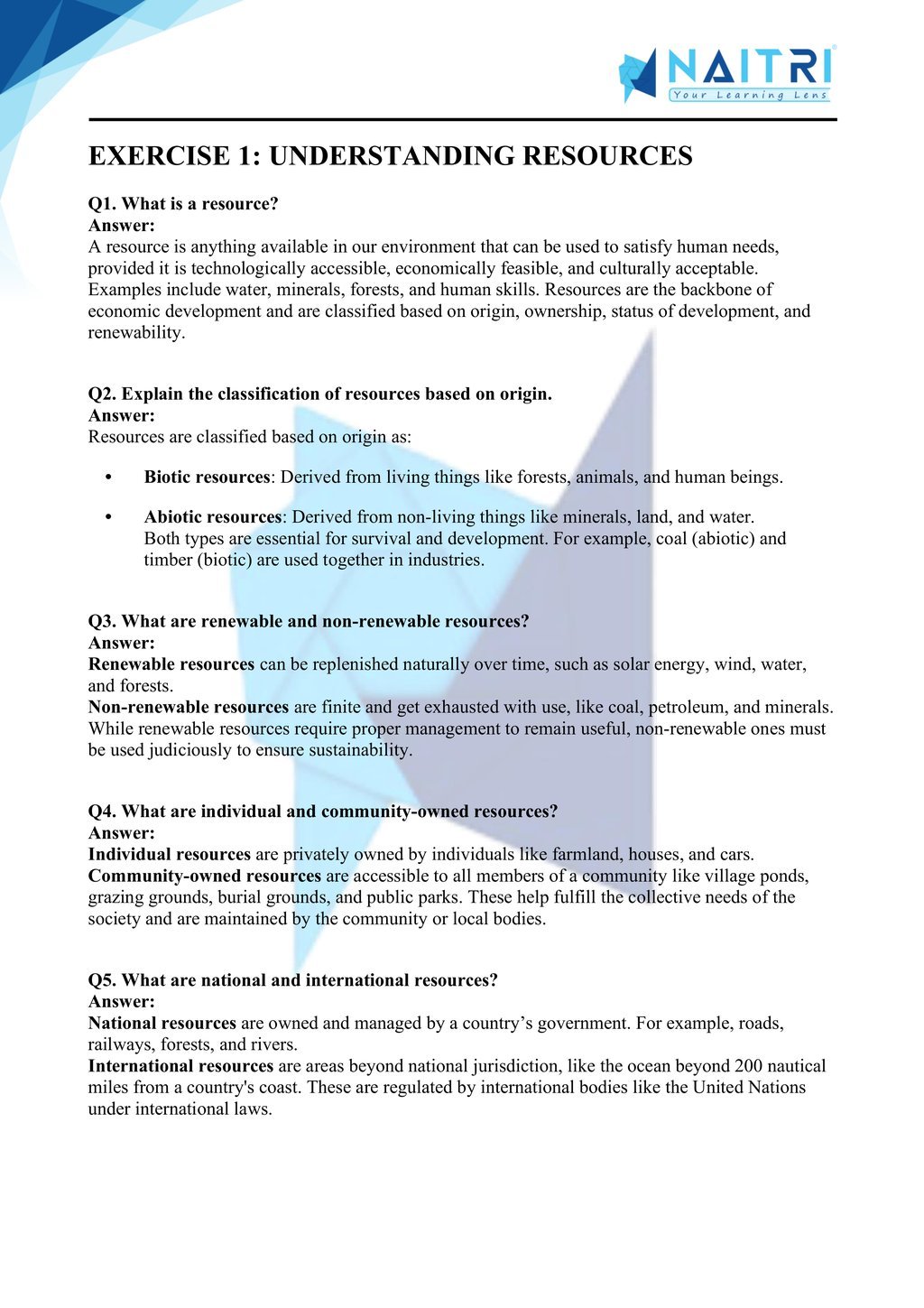
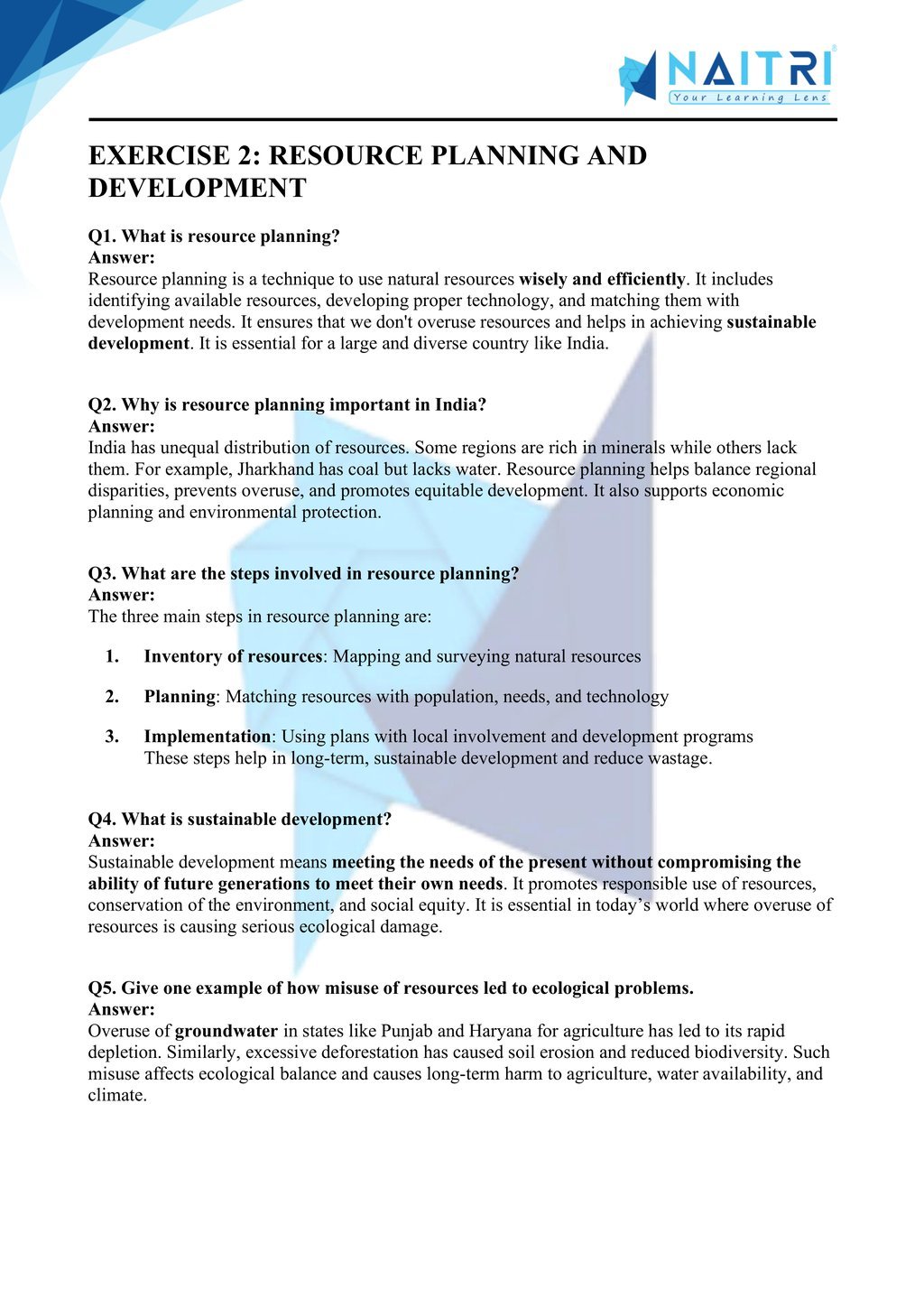
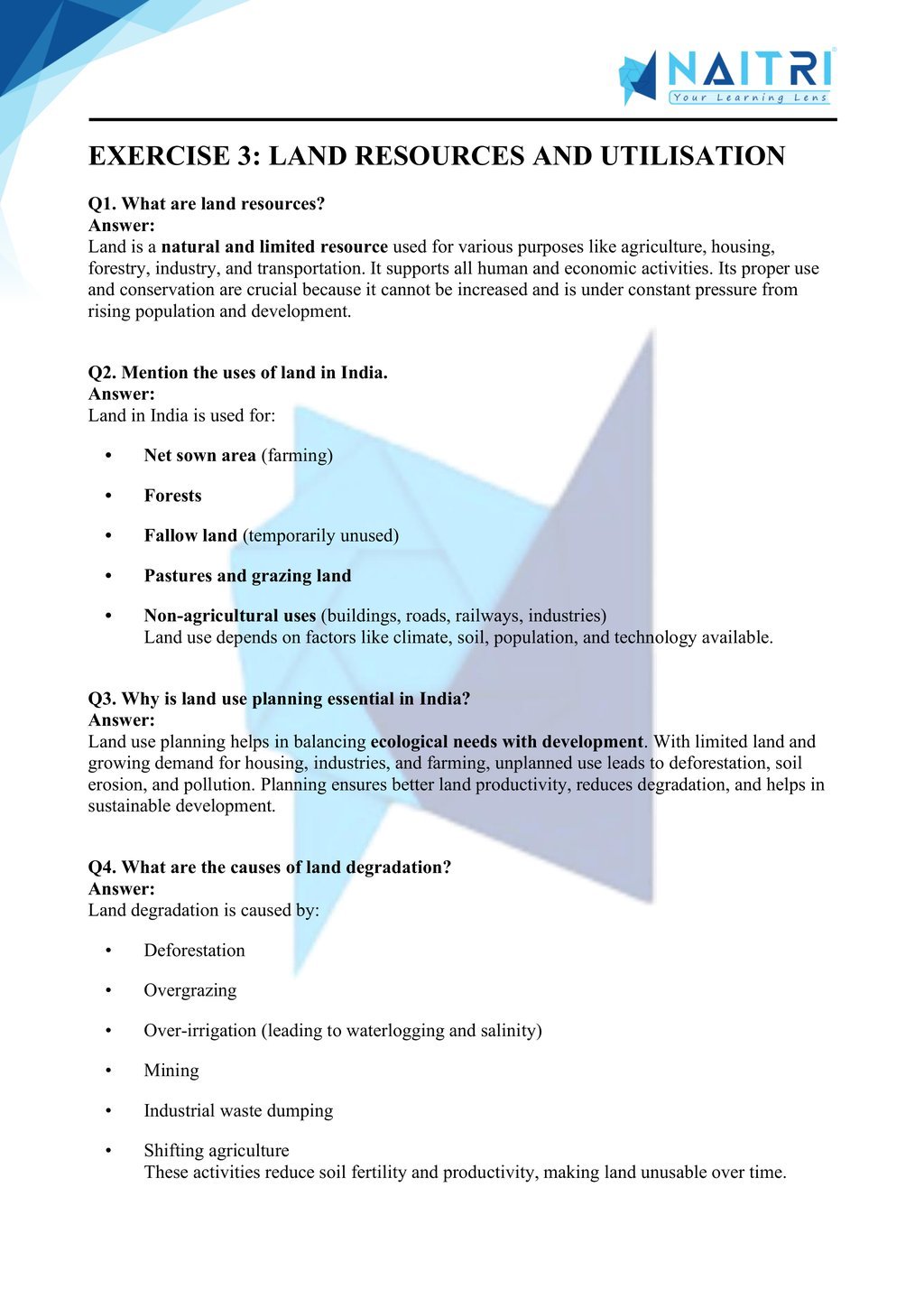
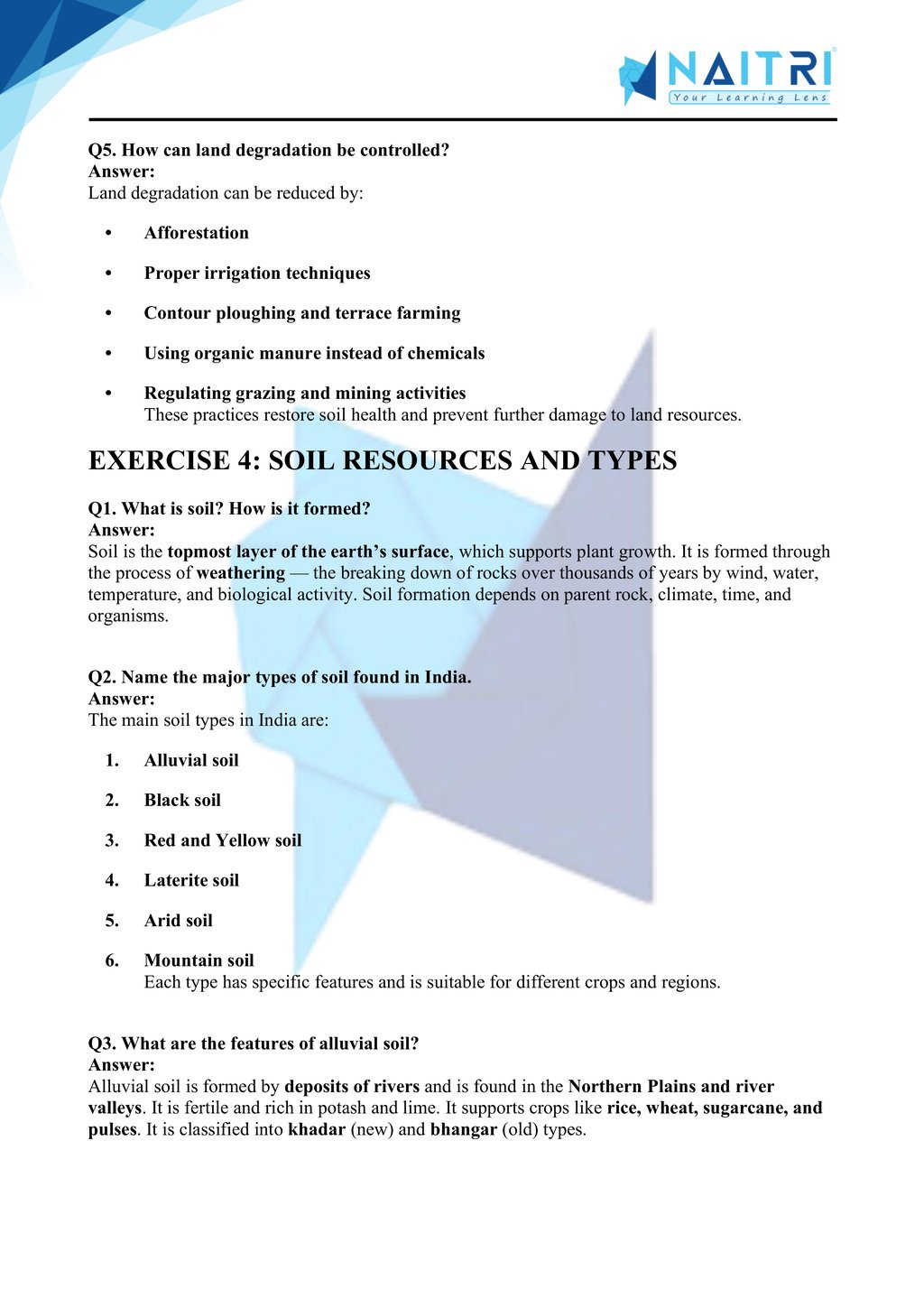
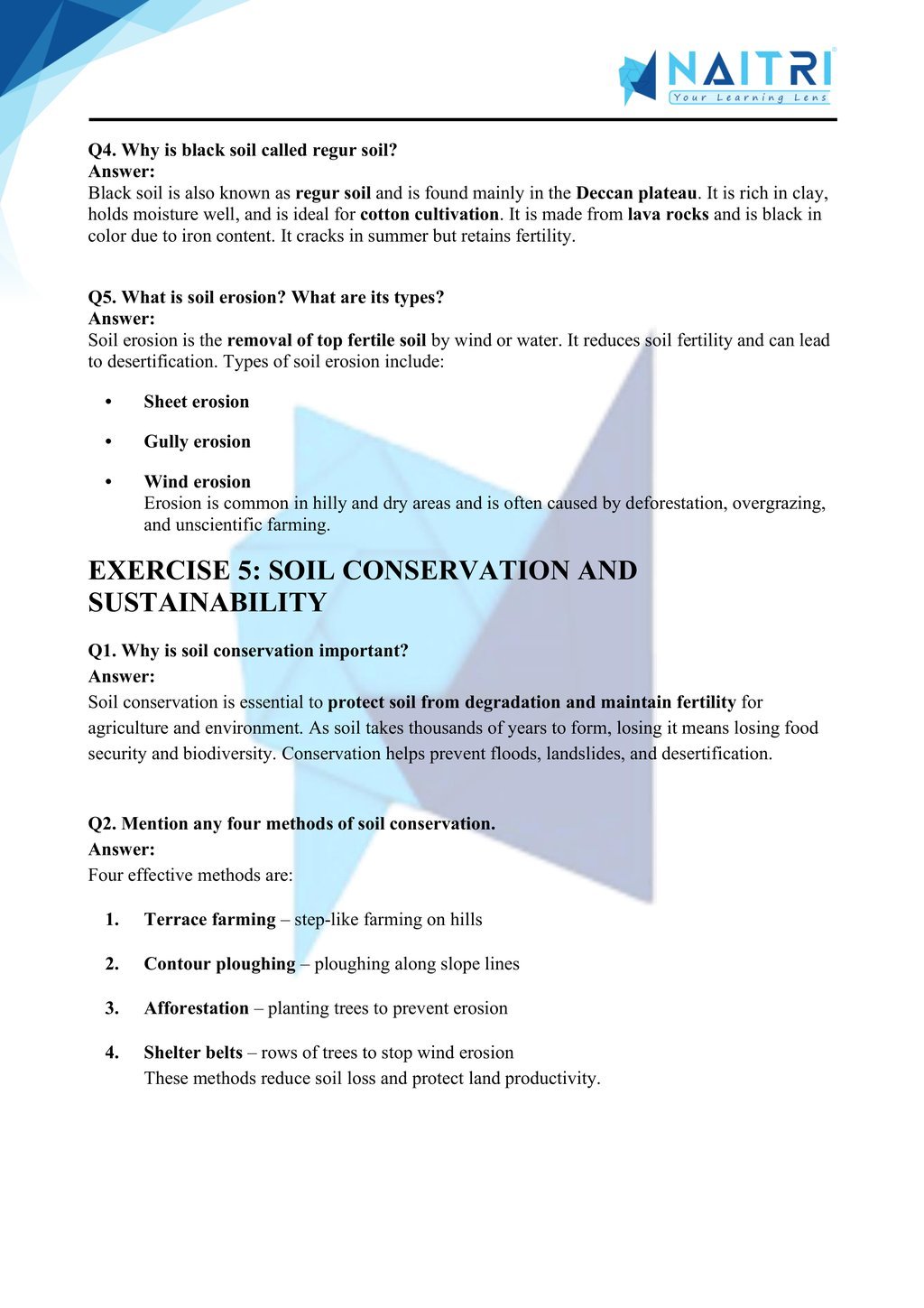
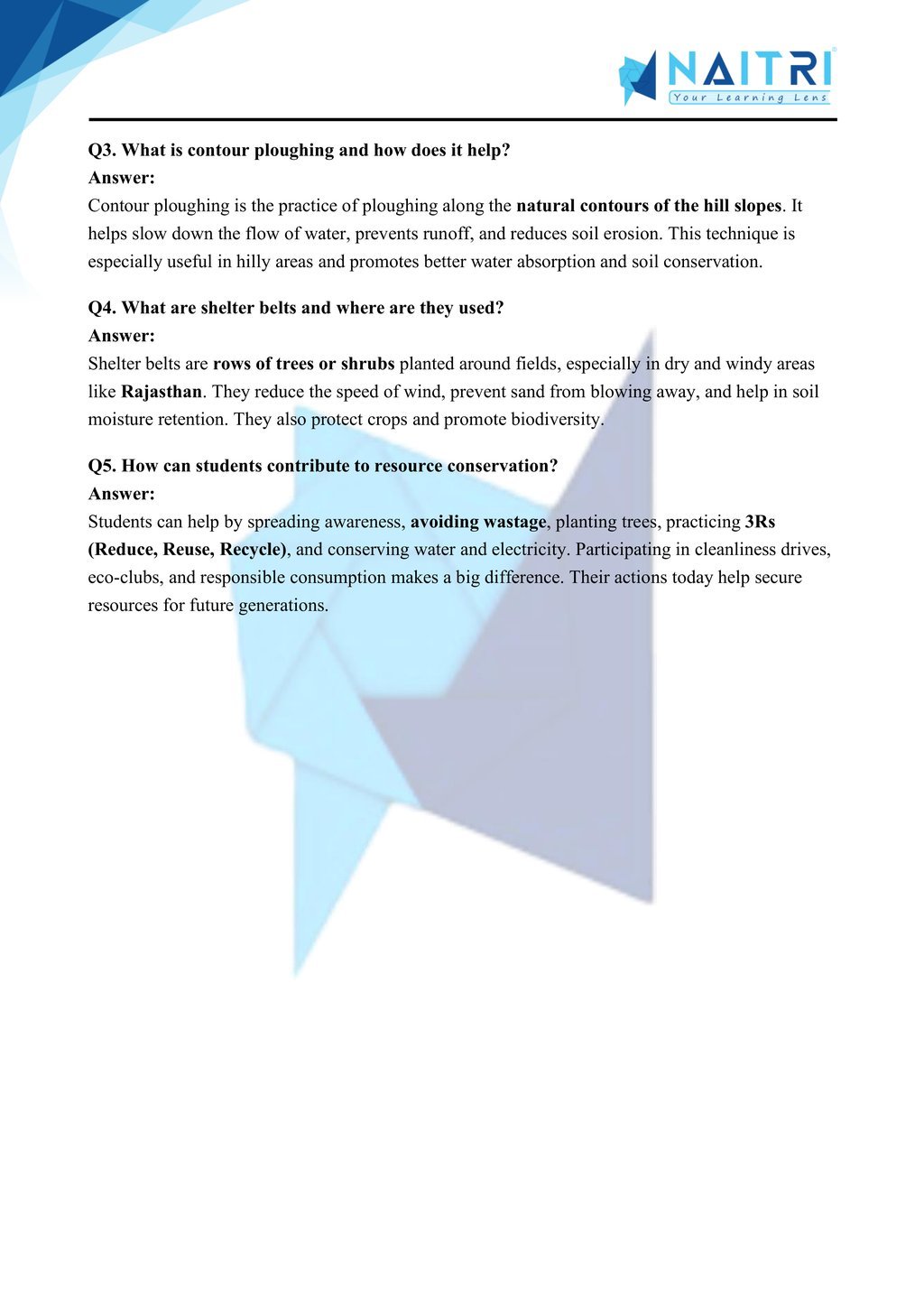
Experience Geography Like Never Before – With AR!
Understanding Resource and Development is now more exciting and immersive! With the NAITRI App, you can explore complex geography concepts through Augmented Reality (AR). Watch resources classify, land types emerge, and sustainable development unfold — right in front of you. Our AR-powered lessons make learning interactive, 3D, and fun, helping you retain concepts better and enjoy every topic.



Visualize . Interact . Understand . The future of learning is here
Resource and Development – Important Questions with Answers
1. What are resources?
Answer: Resources are all those elements of the environment that are technologically accessible, economically feasible, and culturally acceptable and are used to satisfy human needs.
2. What are the different types of resources based on origin?
Answer: Based on origin, resources are classified as:
Biotic: Derived from living things (e.g., forests, animals)
Abiotic: Non-living resources (e.g., minerals, water)
3. Define renewable and non-renewable resources with examples.
Answer:
Renewable resources: Replenished naturally (e.g., solar energy, wind).
Non-renewable resources: Limited and exhaustible (e.g., coal, petroleum).
4. What are individual and community-owned resources?
Answer:
Individual resources are owned privately (e.g., farmland).
Community-owned resources are used by all members (e.g., parks, ponds).
5. What are national and international resources?
Answer:
National resources: Belong to a nation (e.g., roads, forests).
International resources: Managed internationally (e.g., oceanic waters beyond 200 nautical miles).
6. What is sustainable development?
Answer: Sustainable development is the process of using resources to meet present needs without compromising the ability of future generations to meet their own needs.
7. Why is resource planning essential in India?
Answer: Resource planning is important due to uneven distribution, overexploitation, and depletion of resources, requiring judicious and balanced use across the country.
8. What are the steps involved in resource planning?
Answer:
Identification and inventory of resources
Planning using appropriate technology
Matching resources with national development plans
9. What is soil erosion?
Answer: Soil erosion is the removal of the topsoil layer by agents like wind and water, which affects fertility and leads to land degradation.
10. Mention two types of soil erosion in India.
Answer:
Sheet erosion – uniform removal of topsoil
Gully erosion – deep cuts in soil due to running water, especially in badlands
11. What is land degradation?
Answer: Land degradation is the decline in land quality due to overuse, deforestation, mining, overgrazing, and improper irrigation methods.
12. Suggest measures to conserve land resources.
Answer: Afforestation, proper grazing, crop rotation, controlled mining, and contour ploughing help conserve land and maintain its fertility.
13. What are the causes of land degradation in India?
Answer: Over-irrigation, deforestation, overgrazing, mining, and waste from industries are some major causes of land degradation in different states.
14. What is the classification of land based on ownership?
Answer: Land can be private land (owned by individuals) or community land (used collectively by communities), such as grazing fields and village ponds.
15. Why is soil considered a resource?
Answer: Soil supports agriculture, forests, human settlements, and is essential for plant growth and various human activities, making it a valuable natural resource.
16. Mention any four major types of soil found in India.
Answer:
Alluvial soil
Black soil
Red and yellow soil
Laterite soil
17. Where is alluvial soil found and what are its features?
Answer: Found in northern plains, it is fertile, rich in potash, and suitable for crops like wheat, rice, and sugarcane. It is deposited by rivers.
18. What is black soil and where is it found?
Answer: Also called Regur soil, it is found in the Deccan Plateau and is ideal for cotton cultivation. It retains moisture and becomes sticky when wet.
19. Explain red and yellow soils.
Answer: Found in eastern and southern India, they form from crystalline igneous rocks, are less fertile but can support crops with proper treatment.
20. What is laterite soil? Where is it used?
Answer: Rich in iron and aluminium, it is infertile for crops unless manured. Found in high rainfall areas, also used for brick-making.
21. What is soil conservation?
Answer: Soil conservation involves preventing soil erosion and maintaining soil fertility through measures like terracing, contour ploughing, and shelter belts.
22. What is the importance of resource development?
Answer: Resource development helps in economic growth, creates employment, ensures availability of essentials, and maintains ecological balance.
23. What is resource conservation?
Answer: Resource conservation is the planned and sustainable use of natural resources to ensure their availability for future generations.
24. Why is India called a resource-rich but resource-mismanaged country?
Answer: India has diverse resources, but due to overuse, unequal distribution, pollution, and lack of planning, many regions suffer from shortages and degradation.
25. How can individuals contribute to resource conservation?
Answer: Individuals can conserve resources by using water wisely, planting trees, reducing waste, using public transport, and spreading awareness about sustainability.
Resource and Development introduces the concept of resources, their classification (natural, human-made, renewable, non-renewable), and the need for sustainable development. It emphasizes the importance of resource planning and equitable distribution. The chapter discusses how overexploitation has led to problems like land degradation and deforestation. By studying this, students understand the balance between development and environmental responsibility.
Download Naitri App
Easy, Visual Learning — Right on Your Phone
Learn with Augmented Reality! The Naitri app makes CBSE and MP Board concepts interactive and fun — even in low-resource settings. Watch lessons, complete homework, take tests, and track progress — all in one place. Anytime. Anywhere.
Available on








